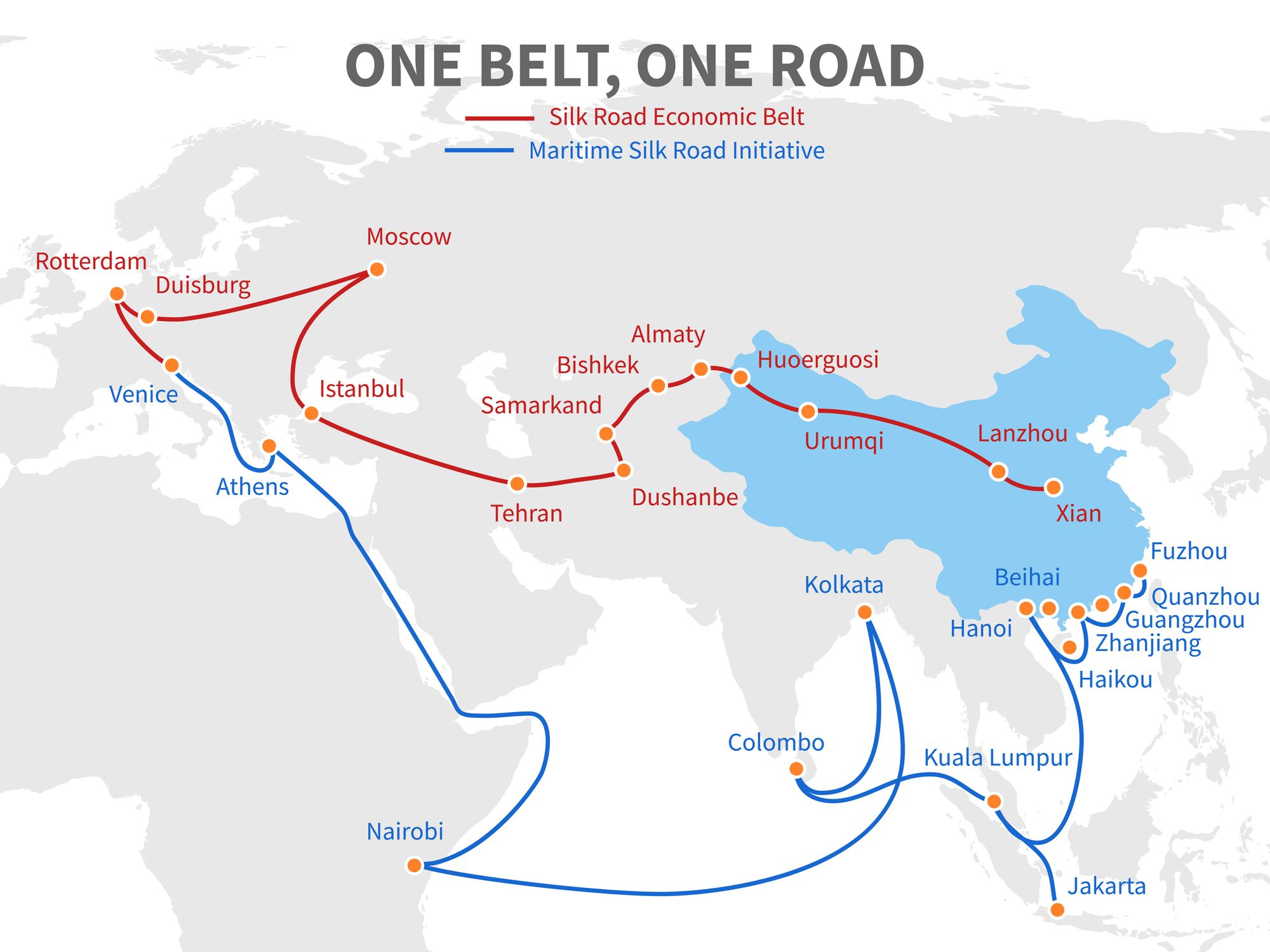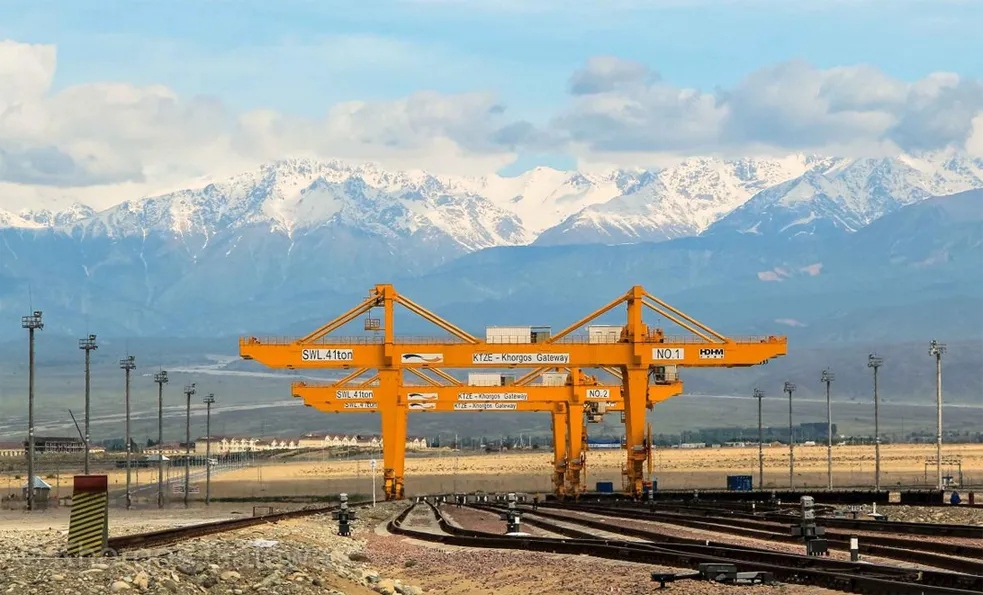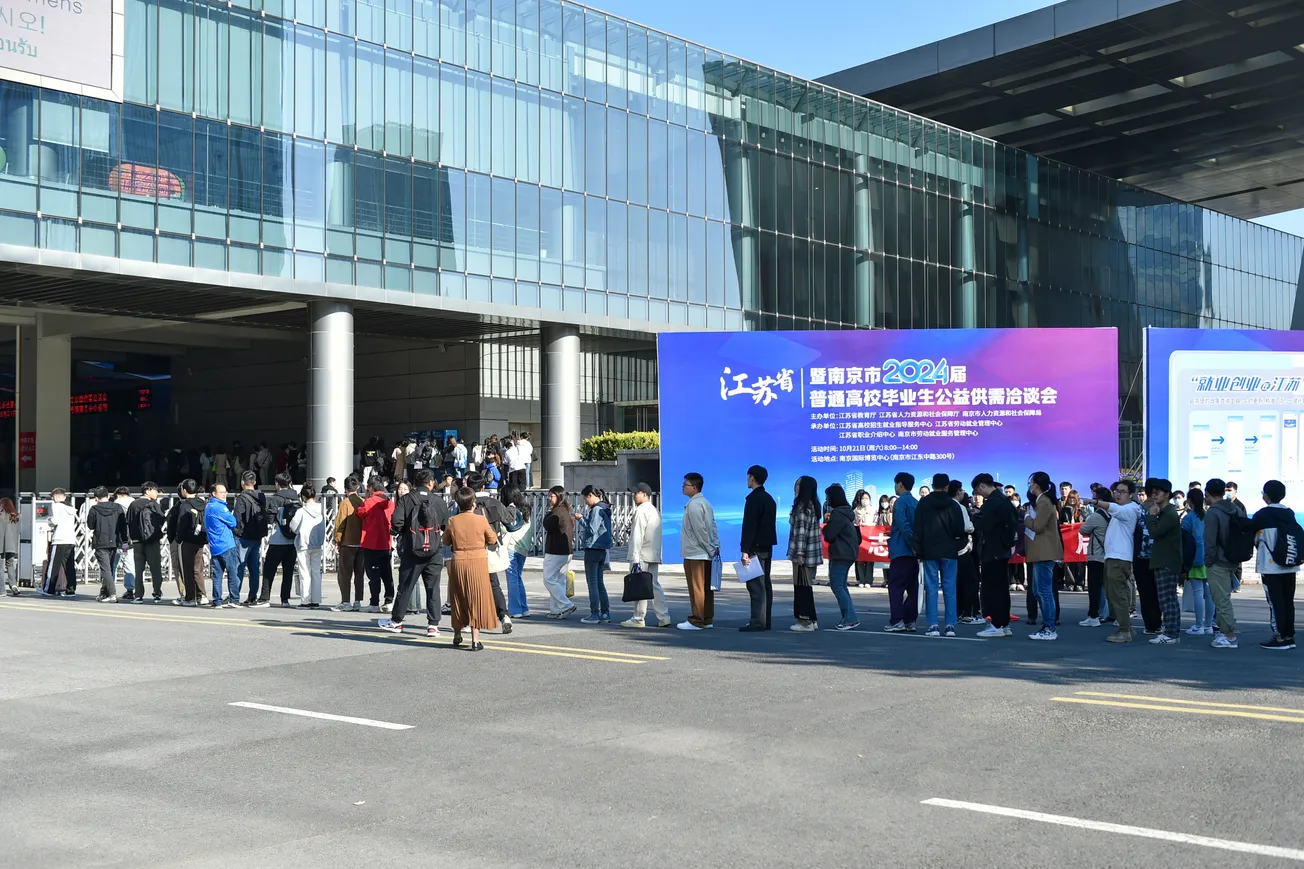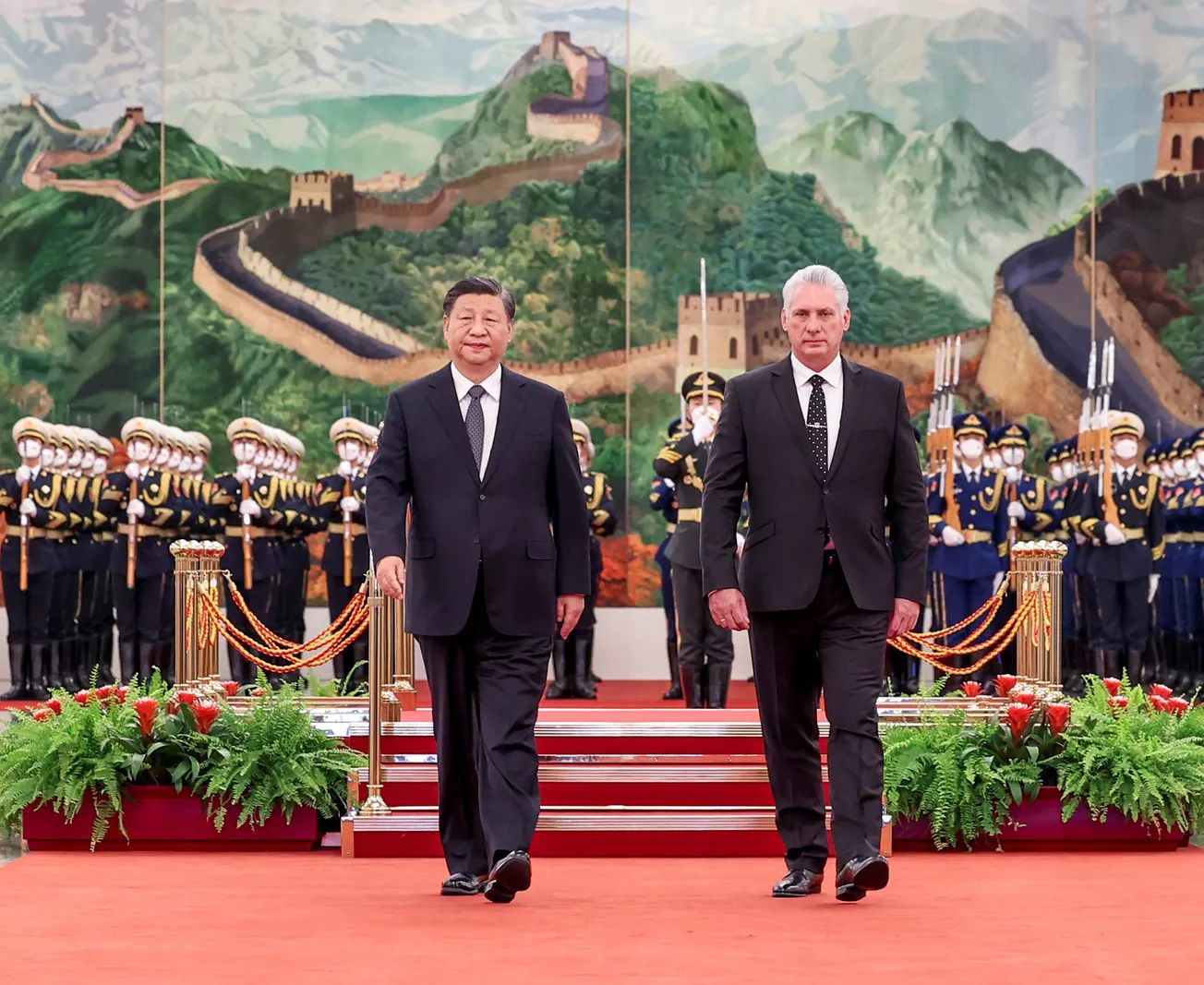Editor's note: This is the first installment in a multi-part series by Justin Du, an analyst of geopolitics and economics focused on China. The series aims to increase understanding of the Belt and Road Initiative by contrasting Chinese and non-Chinese perspectives.
In September 2013, Xi Jinping, the President of the People's Republic of China, announced the One Belt One Road program (also known as the Belt and Road Initiative). It is a project that seeks to connect the commercial routes between Asia, Africa, and Europe via land and maritime networks. The goal is to improve regional integration, foster strategic cooperation, and stimulate economic growth. The project takes its name from the ancient Silk Road, which was built during China's Han Dynasty and connected China to the Mediterranean via the Taklamakan desert. The Belt and Road Initiative (BRI) is a project worth over trillions of dollars and affecting the lives of the billions. BRI is currently expanding its global reach by signing hundreds of additional contracts, including investments in infrastructure development of ports, roads, railways, airports, electric plants, and telecommunication networks.
There are multiple motivations behind the initiative. Economically, the growing volatility of the trading relationship between China and the United States has pushed China to explore new alternatives to stabilize its economy.
The BRI comprises six strategic routes that connect mainland China to the rest of the world. The two ends of the BRI, East Asia and Europe, are major developed global economies that enjoy prosperity and technological advancements. In between the endpoints, Southeast Asia, the Middle East, Inland China, and Africa encompass developing markets with substantial economic potentials. From China's perspective, it desires to foster multilateral cooperation of these areas that circumvent the Malacca Strait to satisfy its economic goals, resolve internal political problems, and expand international influence.

Finding Strategic Partners And Preparing For The Future
First, since China's Reform and Opening in 1978, China has focused on expanding its production power and accumulating capital. While this strategy has helped China to hit the stride in terms of economic growth and global influence, over the years, it has caused China to face problems such as overwhelming power of production and excessive foreign currency reserve. In the long run, the immoderate output is expected to cause political instability once the significant infrastructure developments in mainland China are completed; and the excessive foreign reserve is likely to cause inflated risk of financial disruption. One of the crucial responsibilities placed on the BRI is fostering cooperation with foreign partners to spend its excess production power and capital in exchange for future strategic benefits promised by those countries.
Exploring Alternative Sources Of Strategic Natural Resources
Second, in terms of natural gas, crude oil, and rare materials, China is highly dependent on imports. Currently, China relies on 70% of its crude oil and 80% of minerals such as copper and steel to be imported from other countries. As such, China puts great hope on BRI to seek out new partners to import strategic resources to avoid possible overdependence.
In April 2019, Beijing launched the "Belt and Road Energy Partnership Cooperation Network (BREP Cooperation Network)" with 29 other countries that hold an abundance reserve of strategic natural resources. The partners include Afghanistan, Algeria, Azerbaijan, Bolivia, Nepal, Iraq, Mongolia, Sudan, Venezuela, and Pakistan. China has initiated numerous energy projects, including pipeline and power plant developments worth tens of billions of dollars, through the BREP Cooperation Network. For example, China has constructed ten international ultra-high voltage electricity networks that connect itself with countries like Russia and Mongolia. China may be cementing itself as an irreplaceable electricity supplier to these countries to exchange a stable supply of strategic resources such as natural gas and crude oil. Such integration of energy partnership will alleviate China's pressure when advancing its economic, political, and military growth.
Balancing The East And The West
Third, China's economic growth has been dramatically imbalanced. Its development of coastal cities such as Beijing, Shanghai, and Shenzhen have significantly outweighed the interior provinces. According to the 2021 first-quarter GDP report of all 31 provinces in China, the GDP of Guangdong, the top-ranking province and one of the coastal provinces, is eight times more than Xingjian, the 24th ranking province. In the long run, such imbalance will cause dissatisfaction and anger, leading to internal political instability.
Another grave concern that Beijing has regarding the disparity of the development between the coastal provinces and the interior provinces is the overreliance on the infrastructures in the coastal areas. According to China's simulation, the coastal provinces that harbor China's major manufacturing and financial power will become the prioritized target in case of war. China will suffer irreparable losses if the infrastructure in these areas is destroyed. China is planning to turn interior provinces like Xingjian into commercial and geopolitical hubs to address these concerns. Take, for example, the BRI's "Central Asia West Asia Corridor," in which Xingjian plays a critical role in connecting China to the Middle East and Europe. While it is unlikely for Xingjian to one day surpass the coastal areas in terms of prosperity, it is evolving into another pivotal connector that holds great geopolitical importance.
China Admits That Now Is The Best Time To Execute BRI
Currently, more than a hundred countries and international organizations are involved in the BRI program. The information cascade caused by China's successful economic development has made the border countries of China more willing to accept its BRI proposal. On the other hand, China also admits that its well-rounded economic power makes Now the ideal time to execute BRI. In conclusion, China's central strategy is to trade what it has in abundance that caters to what other countries need in exchange for long-term strategic benefits.
In the next installment of this series, we'll look at some of the most iconic infrastructure projects built as part of the BRI and their strategic importance to China and the rest of the world.
Justin Du is an analyst interested in the nexus of geopolitics and economics, focusing on China.









